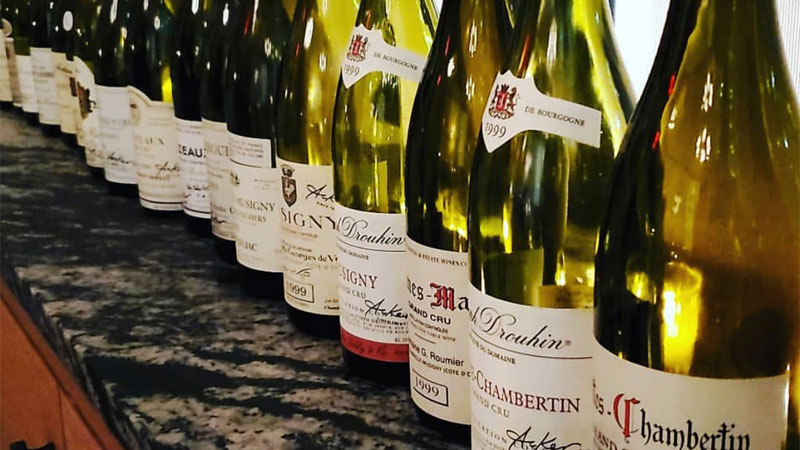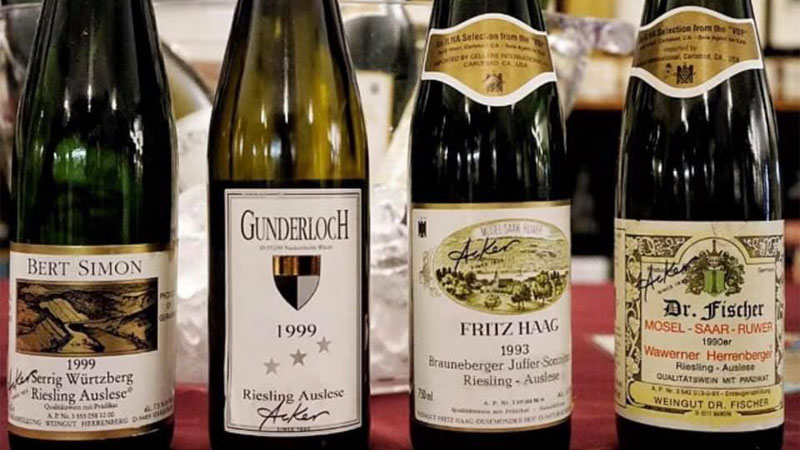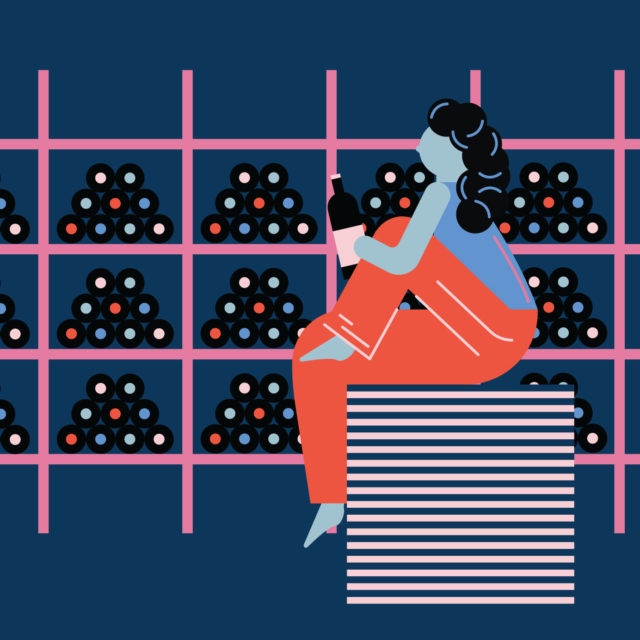Aging wine, according to New York Times critic Eric Asimov, is “an act of hope and optimism, laced with fear and dread.” Even for those with the space and patience to lay down a few cases from their favorite Chianti or Bordeaux producer, there’s no guarantee the wine will evolve elegantly over time.
For most American wine drinkers, however, this is a worry far removed from the realities of modern-day wine consumption. The typical drinker does not have access to spacious wine cellars, and unlike many European nations, cellaring wine at home is simply not built into our drinking culture.
However, this does not mean that we can’t enjoy aged wines on a regular basis. In fact, the most convenient, reliable, and often (surprisingly) cheapest option for enjoying aged wines is to buy bottles that have already been cellared by retailers and private collectors.
Clues for Finding the Best Aged Bottles
Whether buying aged bottles or current releases, it’s important to find a trustworthy wine retailer. Build a relationship with a local wine store, and you can confidently branch out to sample new grape varieties and regions. And if the situation should ever arise where you have to return a bottle because it’s flawed, you’ll feel much more comfortable doing so if you’re familiar with the retailer who sold it to you.
In the case of buying aged wines, building this trust is even more important. If a wine retailer is selling an aged bottle (around five years or more for a white, and considerably older for reds), they’ve either had to cellar that wine themselves or purchase it already aged from a private collector. In each scenario, the wine will only remain in optimal condition if it’s been stored appropriately since the winery released it.
“The key, always, with older wine is, ‘Where has it been? And who has handled it?’” says Matt Tornabene, president of New York-based wine retailer and storage business, Manhattan Wine Company.

Prior to starting his business, Tornabene worked for Acker Merrall & Condit, an auction house specializing in “fine and rare” wines. Nowadays, he uses the knowledge gained handling precious, aged bottles when he’s buying wines from private collectors to sell in his store.
“We must get a call a week where somebody says, ‘I have a bottle of Dom Perignon that my aunt gave me and it’s been sitting in my closet for 20 years; would you guys be interested in buying it?’ And we’re like, ‘Nope, no thank you.’”
Instead, wine buyers such as Tornabene source from cellars that hold bottles in specific conditions: humid environments, outside of direct sunlight, and held at a consistent temperature of around 55 degrees Fahrenheit. Bottles should also be stored horizontally so the cork remains in constant contact with the wine, ensuring it doesn’t dry out over time and minimizing the amount of oxygen that enters the bottle (oxygen causes wine to age and, eventually, become vinegar).
Consumers, too, should look for these conditions when buying from wine stores — especially if they don’t have previous experience buying from the locale. If a dusty, aged bottle is displayed on a store shelf at room temperature, chances are it’s been there for a while. No matter how attractive the price, the bottle is almost certainly not worth the risk.
And even if a wine is being stored in a temperature-controlled environment, the conditions of the bottle can provide further, significant clues as to the state of the liquid inside.
“If the [level of the wine inside the bottle] is high shoulder or below, take a pass,” says Scott Torrence, a wine industry professional with 25 years experience. Like Tornabene, Torrence spent much of his career working for an auction house, Christie’s, and now buys and sells rare, aged bottles through his online business, Chapter 4.
Ideally, Torrence adds, even if a bottle is multiple decades old, the level of the wine should be anywhere between the base of the neck and above. This indicates that the cork is intact, and the wine has been protected from over-exposure to oxygen. If possible, Torrence also advises examining the condition of the cork, which should show no visual signs of leakage or crumbling.

Grapes and Regions to Look Out For
If a bottle ticks all the above boxes, there’s a good chance the wine inside has been aged in optimal conditions. But — this doesn’t ensure the wine inside was capable of aging in the first place. Next up is assessing the wine itself.
Levels of acidity, sugar for white wines, and tannins for red wines are among the most important factors influencing whether a wine can age or not. Certain grape varieties are better suited to aging. For white wines, these include Riesling and Chardonnay; and ageable reds include Cabernet Sauvignon, Nebbiolo, Tempranillo, Syrah, and Pinot Noir.
The likeliness of improving with age further increases when the grapes are grown and vinified in the regions they’re traditionally associated with. That means Riesling from multiple German regions and Alsace, and Chardonnay from Burgundy and Napa. For reds, look for Cabernet Sauvignon (and Cab-driven blends) from Napa and Bordeaux, Nebbiolo from Piedmont (particularly Barolo and Barbaresco), Tempranillo from Rioja and Ribera del Duero, and Pinot Noir from Burgundy.
Even if a wine is made using these varieties and in these regions, there’s still no guarantee it will be capable of aging. To provide further assurances, Torrence recommends targeting bottles from reputable producers. If they’re producing high-quality wines now, he says, there’s a high chance they were also doing so 15 or 20 years ago. (User-driven bottle-tracking websites such as CellarTracker provide an invaluable resource in this pursuit.)
Paying the Price for Aged Wines
There is one final challenge in buying aged wines, and that is, of course, their price point. Once a region or producer gains a reputation for offering age-worthy wines, it typically adds a premium to bottle prices. Many of the regions listed above, particularly Barolo and Burgundy, are no longer an option for the majority of wine consumers because of huge price inflations in recent decades.
But both Tornabene and Torrence agree that unheralded regions and grapes are out there. Each points to regions like Corsica and Languedoc in southern France, and Valtellina, Alto Piemonte, Sicily, and Chianti in Italy as affordable alternatives.
“Nobody really thinks you can age $20 Chianti but you can,” Torrence says.
While it’s impossible to say exactly how much one can expect to pay for aged wines from these regions — the many factors to consider span age to producer to bottle condition — Tornabene says $25 to $30 is a realistic starting point. At Chapter 4, meanwhile, Torrence offers dozens of aged bottles in the $15 to $20 range.
Ultimately, just like cellaring bottles, buying aged wine is accompanied by inherent risks. If you don’t want to get burned, “only take a risk on something you can afford,” Torrence says.
